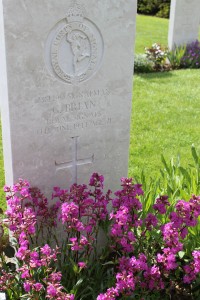“Think not only of their passing, remember the glory of their spirit” –Normandy American Cemetery
As I write this post on a coach from Bayeux, France to Paris, I am reflecting on the past week of traveling around Normandy and learning about one of the most well known periods of World War II—the D-Day invasion and subsequent liberation of France. On 6 June 1944, Allied troops broke through the German fortified Atlantic Wall, invaded five beaches in Normandy—Utah, Omaha, Gold, Juno, and Sword—and secured a foothold on the continent that would allow them to win the war within a year. We visited many of the important D-Day sites, including Utah, Omaha, and Gold Beaches, Sainte Mere Eglise, Pegasus Bridge, and Point du Hoc. The beauty of the small towns like Bayeux that dot the Norman countryside make it difficult to imagine that thousands of French civilians and Allied and German troops lost their lives in the occupation and fighting.
In addition to the above sites, we visited three cemeteries while in Normandy—the German, American, and British. Each differed in how it memorialized the fallen and I felt very distinctive emotions in each one.
The La Cambe German war cemetery, the first of our cemetery visits, preached the message of peace. As a quote in the modest visitor’s center said, “The soldiers’ graves are the greatest preachers of peace.” The cemetery itself was very peaceful as there were far fewer visitors here than at the American cemetery. Flat brown stones mark graves, with two men to a stone. Sets of five black stone crosses break the rows here and there, and the focal point of the space is a tumulus that serves as a mass grave for almost 300 soldiers. In all, over 21,000 Germans are buried at La Cambe. Here I saw the most graves marked unknown—zwei deutsche soldaten or “two German soldiers.” The site felt peaceful because of its simple design and lack of ceremony.
Our second cemetery stop, the American war cemetery, is nestled along the coast, overlooking Omaha Beach and the English Channel. This is the only cemetery I knew about before coming to Normandy because it is so iconic in American war memory. By far the most grand of the Norman war cemeteries, uniform rows of white crosses and Stars of David line the plots, overlooked by a towering statue representing the “Spirit of American Youth Rising from the Waves.” As I entered the cemetery, the National Anthem resounded over the grounds and I was overwhelmed with emotion. I felt pride for my country and pain for those who have and will lose their lives to war. I also struggled with feelings of confusion. I have been learning so much about how many lives were lost during the war, yet this site glorifies death and sacrifice. I do not think we should remember American lives as more valuable than other lives, but the grandeur of that place made me question how we remember war losses today.
The Bayeux War Cemetery holds mostly British soldiers, but there are also several hundred Germans and Poles. Although the most simple of the three—it stands unassumingly along the side of a busy Bayeux street–this site moved me more than the others. The site itself is the most beautiful of the three because flowerbeds and flowering trees surround the headstones. Each headstone contains not only name and rank, but also the insignia of his company and a personal epitaph from family members. Walking along the rows, I saw messages from parents, children, and wives of the fallen. The explicit knowledge of the people that lost someone they loved made the deaths much more real for me.
These three cemeteries each send a different message. The German cemetery calls for peace; the American site glory for the fallen; the British seeks to add personal connection to the terrible sacrifice of war. The more I reflect on these three sites, the more I try to understand how these very different ways of memorializing soldiers that were killed in action contributes to how we remember the past. These places profoundly shape the way that we think about the sacrifices of the many that lost their lives during World War II.


